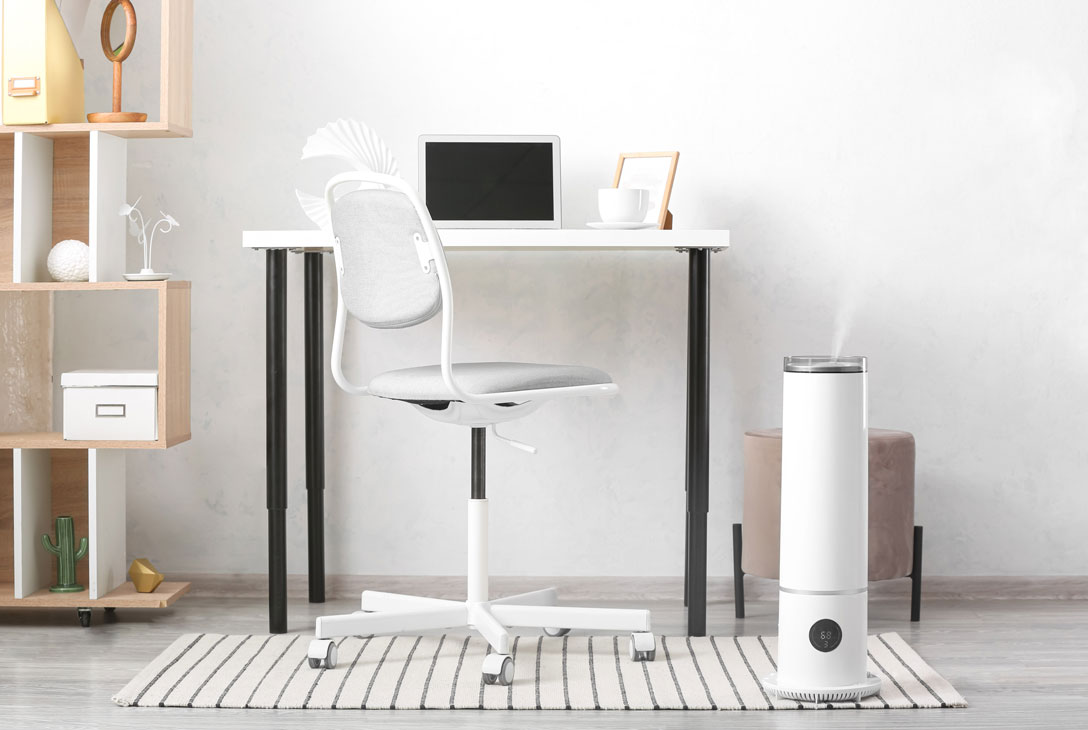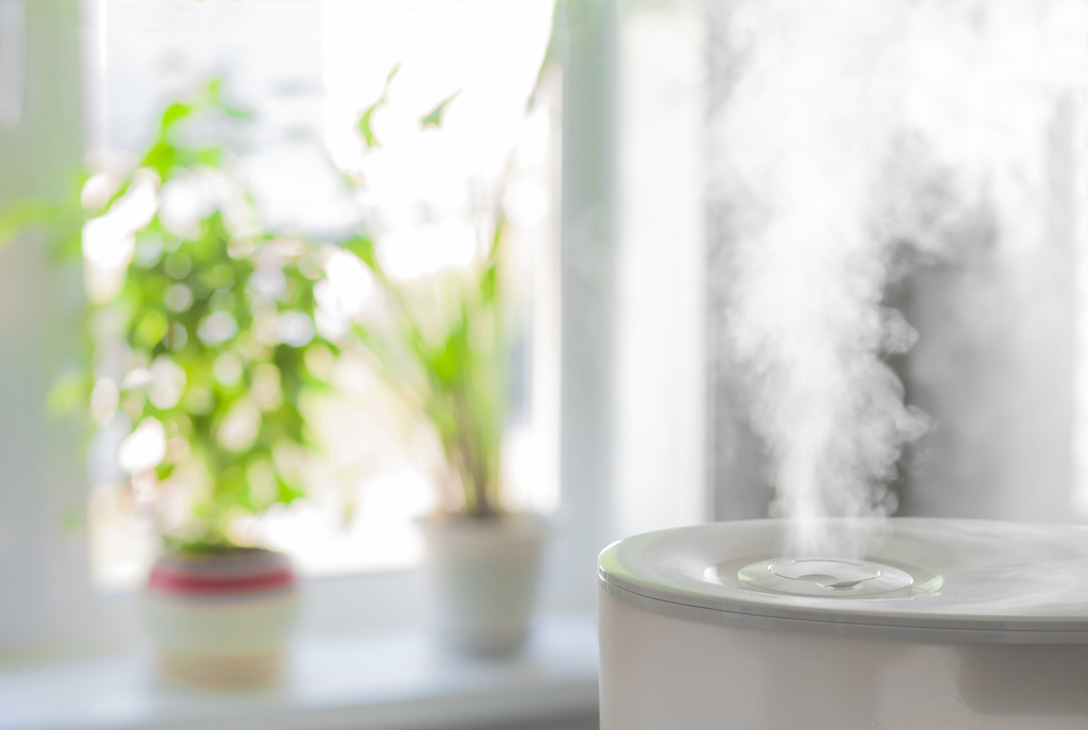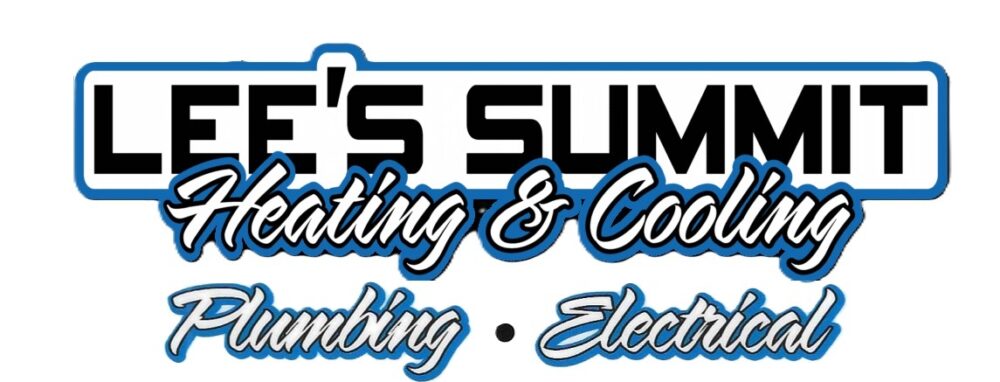Advice For Homeowners, Indoor Air Quality
Lee’s Summit Heating and Cooling has over three decades of experience with HVAC maintenance, installations, plumbing, and electrical services throughout Lee’s Summit, MO. Let us walk you through the differences between central and room-scale humidifiers so you can choose the best one for your needs.

Choosing the right humidifier can be crucial to the indoor air quality of your home. Join us as we discuss the differences between central and room-scale humidifiers before you invest in one.
Next Steps:
Table of Contents
- What Are Humidifiers: Central vs. Room-Scale
- Installation & Maintenance
- Cost Considerations
- Consistent Humidity Levels
- Key Comparison Chart
- FAQ
What Are Humidifiers: Central Vs. Room-Scale

Humidifiers are devices designed to add moisture to the air in indoor spaces, addressing dryness, and enhancing comfort. They come in various types, including central humidifiers and room-scale humidifiers.
Central Humidifiers
Central humidifiers are devices integrated into a home’s HVAC system to add moisture throughout the entire house. They work by distributing water vapor through the heating or cooling system, maintaining a balanced and comfortable level of humidity in the indoor environment.
Room-Scale Humidifiers
Room-scale humidifiers are standalone devices designed to add moisture to a specific area. They work by releasing water vapor directly into the air in a room, helping to alleviate dryness and improve humidity levels in localized spaces.
Installation & Maintenance

Central and room-scale humidifiers require different installations and ongoing maintenance:
- Central humidifiers are integrated with your HVAC system, requiring professional installation and maintenance.
- Routine maintenance includes regular cleaning of the humidifier unit, changing water panels or filters, and monitoring water supply connections. Professional HVAC system inspections are recommended to ensure optimal performance.
- Room-scale humidifiers are portable and easy to set up but need regular cleaning and refilling. They usually only require an electrical outlet and water source.
- Maintenance involves regular cleaning of the water reservoir, replacing filters or wicks, and ensuring proper disinfection to prevent microbial growth. Periodic checks on the unit’s functionality and adjusting settings based on seasonal humidity changes are essential for efficient operation.
Cost Considerations
There are pros and cons when it comes to costs no matter which option you choose. Here’s a quick breakdown:
- Central humidifiers have higher upfront costs but offer long-term savings with lower energy usage.
- Initial Investment: Along with the higher upfront costs, be sure to factor professional installation into the overall price.
- Energy Efficiency: Central humidifiers have lesser impact and energy use than using multiple standalone, room-scale humidifiers throughout different rooms of the house.
- Maintenance Costs: Regular maintenance costs for central humidifiers include filter replacements, water panel changes, and occasional professional inspections. Factor these ongoing expenses into your budget.
- Room-scale humidifiers have lower initial costs but may require more frequent replacement or multiple units for larger spaces.
- Initial Investment: Prices vary per unit and features but don’t require professional installation which lowers the initial cost greatly. Initial purchase averages around $50-$200.
- Multiplication Factor: If humidifying multiple rooms, consider the cumulative cost of purchasing and maintaining multiple room-scale units. This can influence the overall expense compared to a central system.
- Energy Efficiency: While individual room-scale humidifiers are energy-efficient, using multiple units simultaneously may contribute to higher energy consumption.
Consistent Humidity Levels

When keeping consistent humidity levels in the home, there’s more information to evaluate before deciding between central and room-scale humidifiers.
- Central humidifiers maintain consistent humidity levels throughout the home, improving overall indoor air quality and comfort.
- Integration with HVAC System: Being part of the HVAC system, central humidifiers can maintain set humidity levels automatically. They work in tandem with heating and cooling systems, adjusting humidity as needed to meet desired levels.
- Less Manual Monitoring: Homeowners may need to perform less manual monitoring and adjustment compared to multiple room-scale units. This contributes to a more hands-off approach to humidity control.
- Steady Humidity Levels: Central humidifiers provide a more stable and steady control over indoor humidity levels, helping to prevent fluctuations that may occur with room-scale units.
- Room-scale humidifiers may be less consistent due to their localized reach.
- Independent Operation: Each room-scale humidifier operates independently, allowing you to customize humidity levels for individual spaces. This can be advantageous for areas with specific humidity needs or higher usage.
- Flexibility: Room-scale humidifiers offer flexibility in addressing humidity concerns in different parts of the house. This adaptability can be useful if certain rooms have varying humidity requirements.
- Potential for Variability: Consistency may vary if room-scale humidifiers are not synchronized or if different units are set to different humidity levels. Regular monitoring and adjustments may be necessary to maintain uniformity.
Key Comparison Chart

Consider your home’s size, layout, and personal preferences when choosing between a central humidifier and a room-scale humidifier, as well as these considerations:
| Feature/Consideration | Central Humidifier | Room-Scale Humidifier |
| Coverage Area | Entire House | Specific Rooms |
| Installation | Professional Installation Required | Self-Installation |
| Integration | Part of the HVAC System | Standalone Unit |
| Maintenance | Periodic Professional Inspection, Filter Changes | Regular Cleaning, Filter Replacement |
| Initial Cost | Higher Upfront Cost + Installation Cost | Lower Upfront Cost (Unit Only) |
| Operating Costs | Potential for Lower Energy Consumption | Lower Energy Consumption Per Unit (higher when using multiple units) |
| Humidity Control | Whole-House Consistency | Targeted Control, Room-Specific Settings |
| Flexibility | Fixed Location & Coverage | Portable and Adjustable for Different Rooms |
| Ease of Use | Automated Operation | Manual Adjustment & Monitoring |
| Ease of Access | Centralized Control | Individual Unit Controls |
When deciding to purchase a humidifier for your house, consulting one of our professionals will be key to making the best final decision. Contact Lee’s Summit to discuss concerns and enhancements of your indoor air quality and what route to take if you’re thinking about installing an air humidifier for your home.
Frequently Asks Questions about Central Humidifiers & Room-Scale Humidifiers
What is a central humidifier?
A central humidifier is a device installed as part of a home’s heating, ventilation, and air conditioning (HVAC) system. Working in conjunction with the heating or cooling system, its primary purpose is to add moisture to the air throughout the entire house. Central humidifiers are typically more powerful and cover larger areas compared to standalone, room-scale humidifiers.
What is a room-scale humidifier?
A room-scale humidifier, on the other hand, is a standalone device designed to increase humidity in a specific room or area. These humidifiers are portable and come in various sizes, shapes, and types, including evaporative humidifiers, ultrasonic humidifiers, and steam vaporizers. They are usually placed in bedrooms, living rooms, or other individual rooms where additional humidity is desired. Room-scale humidifiers are more suitable for smaller spaces and are not connected to the central HVAC system.
How does an air humidifier improve the air quality of your home?
An air humidifier improves home air quality by:
- Adding moisture to dry indoor air.
- Helps alleviate dryness in the skin, eyes, and respiratory system.
- Eases symptoms of allergies, asthma, and colds.
- Hinders the survival of airborne viruses and bacteria.
How long does installing a humidifier typically take?
The time it takes us to install a new whole-home humidifier in your HVAC system will depend on the model you select and how accessible your unit is. For an accurate timeline, contact Lee’s Summit Heating & Cooling and talk to one of our team members about your specific needs.
How much does installing a humidifier for the home usually cost?
Several factors help determine the cost of installing a new humidifier in your home. Here are some of the most important:
- The square footage of your home/room
- The make and model of your new humidifier
- The location where your humidifier needs to be installed
For an accurate estimate of what installing a new humidifier in your home will cost, contact Lee’s Summit Heating & Cooling. One of our team members will be happy to help you with a quote for our work. We also offer financing options for projects costing over $1,000, including qualifying new humidifiers.



